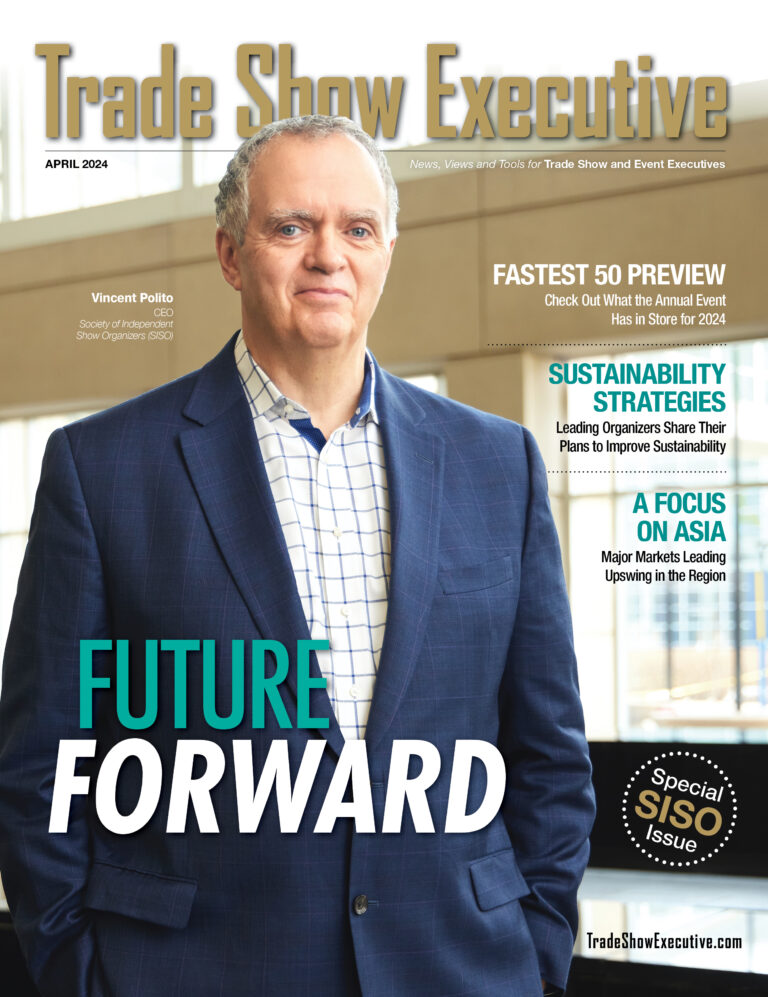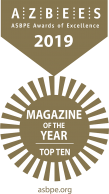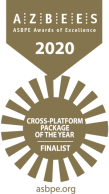Carlsbad, CA – Convention centers have often been a source of “green” for their communities through the economic impact of the expositions they host. Now these venues are going green in another way. Most convention centers have stepped up their plans for environmentally friendly practices that reduce energy consumption and the amount of waste they produce.
“Green initiatives are huge and will continue to grow,” said Mark Zimmerman, general manager of the Georgia World Congress Center in Atlanta and a board member of the Exhibition Services & Contractors Association (ESCA).
Whereas in the past two decades, the focus has been on expansions and new builds, environmental consciousness is one of the biggest trends impacting convention centers today. Convention centers are devising unique programs to shrink their environmental footprint and help brighten the shade of green of the trade shows in their buildings.
Going green is easier for newer buildings. Innovative architecture, “smart” infrastructure, “living rooftop” gardens and recycled materials help to ease their impact on the environment right at the ground level. But highly efficient HVAC systems, natural lighting, recyclable trash cans and toilets that are stingy with water have been added to existing centers. Some ideas have been unique and earned an Innovation Award from Trade Show Executive magazine, such as Direct Energy Centre, Toronto, which is harnessing the power of wind energy, and Austin Convention Center’s façade which serves as a solar collecting array.
Others have ways of going green that don’t involve major renovations. Electronic marketing materials (reduction of paper waste) and recycling have been embraced as standard operating procedure. Food initiatives incorporate environmentally friendly menus and donations of leftovers to charity. The Georgia World Congress Center, for instance, works with the Atlanta Community Food Bank to redistribute its leftovers throughout the state of Georgia.
Areas around convention venues are also becoming greener. While not yet as popular as revenue-generating hotels, more parks are popping up next to convention centers to add to a building’s curb appeal. Houston became one of the latest cities to debut a convention center-adjacent park. The 12-acre Discovery Green opened across from the George R. Brown Convention Center this year and is being billed as the facility’s “front yard.” Designed to provide outdoor meeting opportunities as well as relaxation space, the park features a one-acre lake, a jogging trail, library service and Wi-Fi access.
Cities Spruce up Convention Neighborhoods
If parks and other greenery can’t be situated around a convention center, the neighborhood can grow in other ways. Restaurants, shopping centers and entertainment complexes are also popular projects. Historically, Rosemont has been known as one of the nation’s leading convention centers. But the city is building another image as well: suburban entertainment center. Rosemont, IL continues to expand its offerings with the Allstate Arena, the Rosemont Theater, area hotels and restaurants—all in close proximity to the Donald E. Stephens Convention Center. With all this development, all the players gain: the city, the CVB, its members, the show managers, exhibitors and attendees. And when there are more entertainment options, that only strengthens the venue’s appeal as each group cross-promotes.
“Cities realize that when there are entertainment and shopping options in the immediate area, they are more likely to attract an audience that will want to come and stay. The event becomes more than just an exhibition and conference program,” says Randy Bauler, corporate relations and exhibits director for the Association of Critical-Care Nurses, and 2008 Chairman of the International Association of Exhibition and Events (IAEE).
Parks and entertainment complexes add extra appeal to a center as a destination. The trend of destination marketing when selling a trade show venue, exhibit space or attendance promotion continues to intensify. “Organizers want to see what a destination has to offer and how that destination can grow their attendance,” says Zimmerman.
Customer Service Always a Priority
Convention centers are also turning their eyes inward with a focus on service. “A lot of facilities are bricks and mortar, lights and glass, and once you get inside, you ask, ‘What works better for me as a customer?’” says Zimmerman. He predicts that convention centers will find ways to enhance service that include working as partners with show managers. Exclusives are out, with all the major industry associations (IAEE, SISO, ESCA and TSEA) speaking out and campaigning against them.
New services, particularly in the technology and communications realm, are likely to be added. RFID, expanded Wi-Fi and centralized AV services are being deployed in the near term, and centers are already looking over horizon for the next emerging trends that could become standard for show organizers. The process of change requires approvals, funding, and construction, which can take years, so planning now will ensure that organizers’ needs in the future will be met.
The Big Picture
Trade Show Executive’s Sixth Annual Directory of the World’s Top Convention Centers looks at today’s state of the industry. We’ve gathered information on venues that host a minimum of 10 trade shows or events per year and offer at least 50,000 square feet of exhibit space.
This year, a total of 478 convention centers qualified for inclusion. Of these, 253 are located in the United States and its territories, 20 are found in Canada, 26 are in Mexico and 179 are international sites. Our editors successfully contacted 98% of the centers analyzed to verify data and contacts.
Trade Show Executive found that the top convention centers in the U.S. offer a total of 58,908,512 square feet of prime exhibit space, a slight increase over last year. [Trade Show Executive does not list the total square footage, which includes meeting and outdoor space.] Meeting space climbed by 6% to 19,233,815 square feet. The exhibit-to-meeting-space ratio subsequently also dropped significantly from 3.1 to 1 in 2007 to 2.7 to 1 this year.
Bauler, whose event features a large conference program, finds the growth in meeting space means more centers can accommodate ACCN and other shows that are conference heavy. “Meeting space that can be broken into smaller rooms and configurations is good for a show like ours with a lot of educational programming,” says Bauler.
Flex space has also solidified as a trend. Flex space, also known as swing space, can be used for different purposes — from trade show exhibits to formal banquets. Because of its increasing importance to meeting planners, Trade Show Executive added a flex-space category to the directory this year. Twenty-three centers listed flex space, totaling just over 3 million square feet.
The Millionaire’s Club
The ten largest centers in the U.S. do not have swing space, but they do have a lot of exhibit space. Their 14.6 million square feet of exhibit space represents a quarter of the convention center space in the U.S.
This year, the International (I-X) Center in Cleveland debuted in the top 10 at number eight after an expansion increased its space to more than 1 million square feet. Mandalay Bay Resort and Casino in Las Vegas was subsequently bumped off the list. All of the centers in the top ten now boast more than 1 million square feet of prime exhibit space, and are in Trade Show Executive’s Millionaire’s Club.
McCormick Place still tops the list with 2.7 million square feet of prime exhibit space. The Orange County Convention Center, Las Vegas Convention Center, Georgia World Congress Center, and Kentucky Exposition Center round out the top five. (See the WTCC at www.tradeshowexecutive.com for the full list.)
Above Average
The complete list of convention centers ranked by prime exhibit space can be found on page 73 in the tabbed divider, “Convention Centers: Ranked By Size.” This section also lists convention centers by meeting space. Some unique facts from the analysis include:
- The Seaport Hotel and Seaport World Trade Center in Boston represent the median prime exhibit space with 118,000 square feet.
- The average square footage of a convention center in the U.S. is 232,840 square feet of prime exhibit space. The Denver Merchandise Mart Complex represents this space at 229,000 square feet.
- The average facility offers 76,023 square feet of meeting space. Convention centers in Canada average more space; those in Mexico average less.
- The most common size, or mode, of U.S. centers is 50,000 square feet of prime exhibit space. Sixteen centers fall into this size category.
The Future
Some industry leaders believe the number and size of convention centers in the U.S. meet the needs of today’s market. Others feel there is more supply than demand. This keeps competition tight and is a driver of industry trends in which buyers tend to have more say.
A big movement underway in the exposition industry, led by IAEE, is to keep substance abusers out of trade shows. “We, as an organization, are trying to put a spotlight on drug-free and alcohol-free workplaces. We’d like to see the facilities, contractors, unions, and labor groups address this issue,” says Bauler. He cites Washington, New York and Chicago as cities that have already put programs in place.
Trade Show Executive will continue to track this and other trends in our magazine, directories and annual reports, including:
- Pardon Our Dust, a convention construction directory published every March and October;
- TSE’s Millionaire’s Club and Mega Facilities in August;
- Mid-Sized Centers in February;
- Facilities with Less than 100,000 Square Feet of Prime Exhibit Space in November; and
- TSE’s E-Clips Breaking News and website, www.tradeshowexecutive.com.
Reach Randy Bauler, corporate relations and exhibits director, Association of Critical-Care Nurses, and 2008 Chairman, IAEE, at (800) 394-5995 x 366, (949) 362-2000 x 366 or randy.bauler@aacn.org; and Mark Zimmerman, general manager, Georgia World Congress Center, at (404) 223-4200 or mzimmerman@gwcc.com











